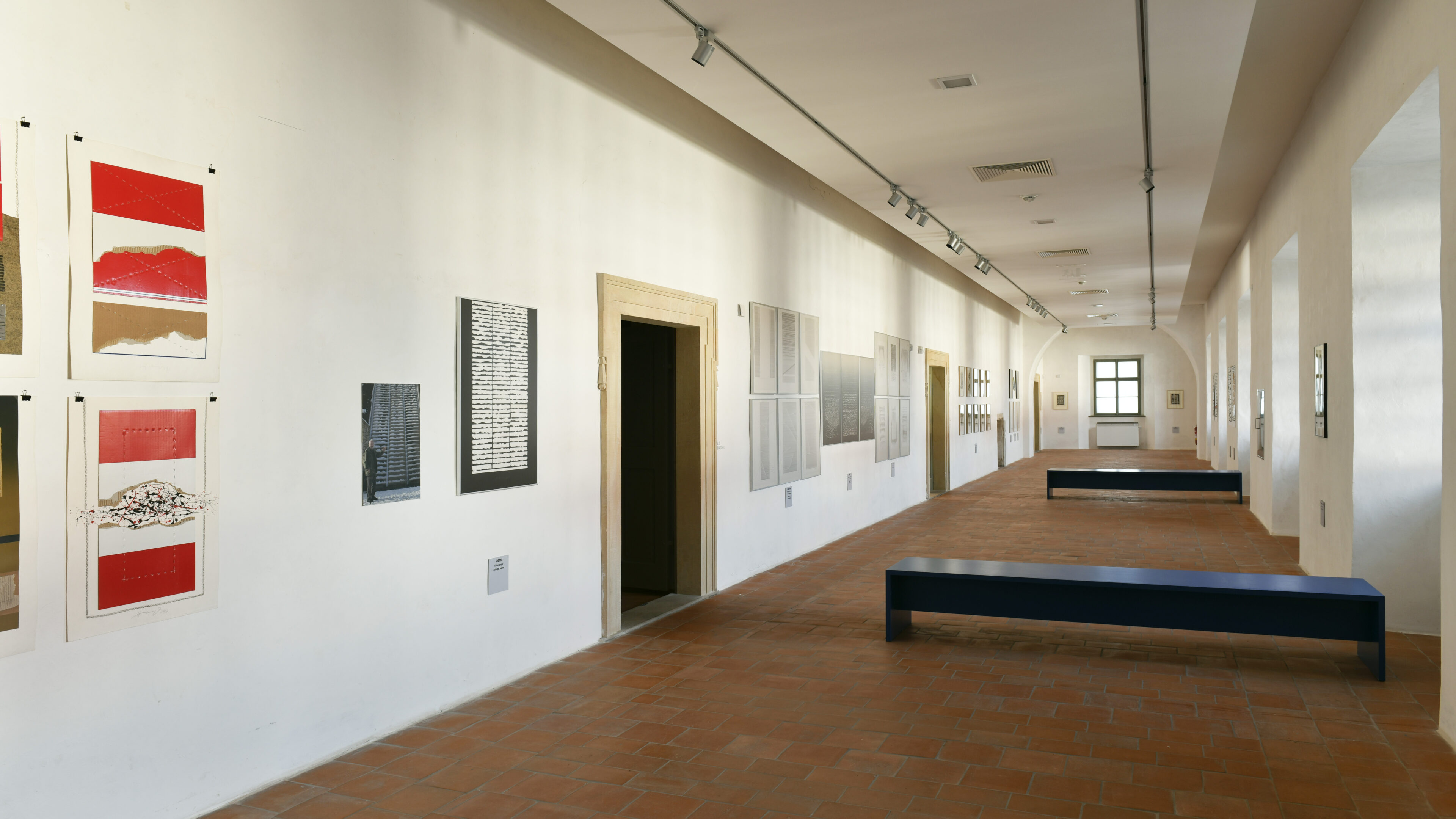Into Space looks at Josef Hampl’s approach to space as reflected not just in his collages but also, and from the very beginning, in his prints and drawings as well.
26. 01. 2020

Into Space looks at Josef Hampl’s approach to space as reflected not just in his collages but also, and from the very beginning, in his prints and drawings as well.
Into Space looks at Josef Hampl’s approach to space as reflected not just in his collages but also, and from the very beginning, in his prints and drawings as well. In both a concrete and metaphorical sense, Hampl’s work is characterized by an expansion into open space. At the exhibition, one such position is represented by photographic records of his land art actions.
The exhibition is being held on the anniversary of the Velvet Revolution.
The beginnings of Josef Hampl’s artistic career are associated with the “Vysočany Circle,” informalism, and the influence of Hampl’s friend Vladimír Boudník. Soon, however, Hampl broke free of Boudník’s influence in order to discover the uniqueness of his own art. Nevertheless, experimentation with graphic methods, a focus on process, and an interest in visual texture and structure remained defining aspects throughout his career. Hampl understood texture, expressions of matter, as a record of the universal order. Over time, these took on a concrete-constructive character while also reflecting the organic nature of the landscape. In the world of art, he felt an affinity towards the art group Zero (which was founded in Germany in the 1950s as an alternative to Art Informel) and, closer to home, Jiří Kolář. His relationship to the landscape is reflected by his participation in numerous unofficial events and outdoor installations in nature during the 1970s and ’80s (e.g., Šárka 77, 1977; Chmelnice, Mutějovice, 1983), but his main focus remained works on paper. He began to take an increasing interest in drawing in the late 1970s. The 1980s were an exceptional period in his artistic career, although he mostly worked for himself – i.e., without the need to exhibit the results. He combined printmaking with drawing and collage, and he added the new and original processual element of sewing thread into the paper on a sewing machine. These sewn collages were followed by large-format sewn collages on canvas in the 1990s. Hampl elaborated his innovative techniques and approaches in extensive series in which he repeatedly returned to the same themes. For Josef Hampl, the act of creating was an open-ended process.
Josef Hampl (1932 Prague – 2019 Hrušov)
In 1955–1960, Hampl took private lessons with Professor Jaroslav Masák at the School of Decorative Arts in Prague.
In 1967–1990, he taught graphic arts at Prague’s Academy of Fine Arts as a specialist instructor under Vojtěch Tittelbach, Jiří John, and Ladislav Čepelák.
He was a member of the fine arts division of Umělecká Beseda and of the Papiriál artists’ association.
Hampl began exhibiting in 1961; his first foreign exhibition was in 1967.